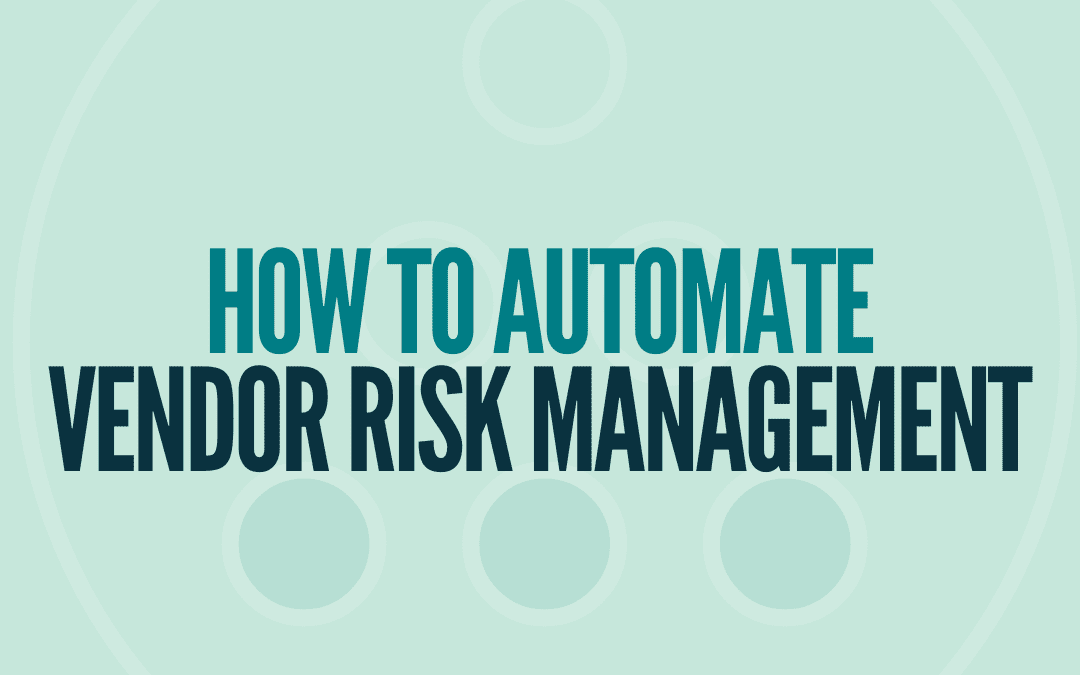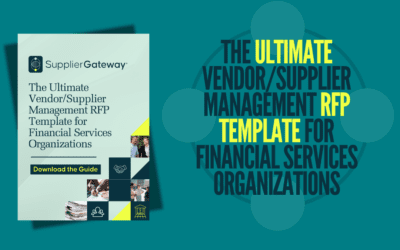Are manual supplier risk management efforts draining your resources and leaving your business vulnerable?
Manual vendor risk mitigation can be time-consuming, inefficient, and prone to human error. As a result, many organizations are automating processes to streamline and safeguard their risk management practices.
Yet selecting and implementing a platform that fits your budget and business needs can be challenging. Follow this simple framework to find the right solution, refine implementation, and strengthen your third-party relationships.
Why Automate Vendor Risk Management?
If you’ve ever searched through multiple spreadsheets to find specific vendor information, you understand the frustration of manual third-party risk management. Manual processes also present several high-level challenges, including lack of visibility, limited scalability, compliance risk, and difficulty in monitoring.
Automated management reduces manual effort and time, improves accuracy, and provides a centralized source for information, meaning you can easily find accurate data with a quick search. Working with an automated supplier risk management software also helps:
- Scale operations: handle large volumes of vendor data to scale more effectively.
- Monitor in real-time: continuously monitor activities, performance, and compliance in real-time, allowing for timely response to emerging issues.
- Prioritize risks: focus resources and attention on the most critical risks.
- Save on costs: reduce manual labor costs, and minimize errors and remediation costs.
- Mitigate third-party risk: protect sensitive data and systems from potential breaches with strong security controls.
A comprehensive supplier data management platform like SupplierGateway can also facilitate tasks like vendor onboarding, risk assessment, and reporting, ultimately strengthening and simplifying overall risk regulation
Key Steps in Vendor Risk Management Automation
Every organization has unique requirements and workflows so a thorough pre-implementation analysis paired with continuous monitoring is critical for finding and integrating the right risk management program.
Assess Your Needs and Current Processes
Assessing needs and current processes provides the foundational understanding necessary to plan, implement, and derive value from automation initiatives. It’s a crucial step for several reasons:
- Discover inefficiencies in your current processes.
- Ensure the solution will serve the overarching goals of the organization.
- Identify redundant tasks or manual processes that can be automated.
- Determine the level of customization required for seamless integration.
- Predict resistance to change and develop proactive strategies to address it.
Start by documenting current processes, including how you handle vendor identification, onboarding, risk assessments, monitoring, and termination. Map out the workflow steps, decision points, responsible parties, and communication channels involved in each process.
Then use the documented processes to identify pain points, bottlenecks, and areas for improvement, like:
- Inefficiencies
- Manual tasks
- Redundant processes
- Gaps in third-party risk assessments
- Frequency of monitoring
Engage key stakeholders from relevant departments by conducting interviews, surveys, or workshops to gather insights into their experiences, challenges, and requirements. Then develop a comprehensive plan along with a gap analysis comparing current processes against desired outcomes and prioritizing areas for improvement and automation.
Select a Vendor Risk Management Software
When evaluating a potential new vendor risk management platform, consider how the platform handles usability, customization, integrations, and support.
Ease of use is a key feature for busy managers implementing a brand-new process. A user-friendly interface enhances adoption and usability among stakeholders. Take a self-guided tour of SupplierGateway’s platform to see intuitiveness, simplicity, and ease of navigation in action.
A customizable solution will allow scalability and adaptation to changing company requirements. For example, SupplierGatewayGATEWAY’s Enterprise Procurement Software has zero seat license fees and no limits on supplier record numbers, making it easy to adjust as your network grows.
Choose a solution that seamlessly integrates into existing systems and tools like procurement platforms, ERP systems, and sustainability assessments and reporting.
Onboarding a new solution is infinitely easier if the company has a strong support team. Note the level of responsiveness during initial conversations and the availability of user communities and knowledge-sharing forums. Determine if the platform provides a dedicated support team as a single point of contact for inquiries and escalations.
Implement and Integrate
The implementation process includes revisiting and revising business processes, such as which forms to use for different stages of the vendor lifecycle and which questions to ask during specific points. It can be time-consuming but careful planning, coordination, and collaboration across departments ensures a smooth transition.
Start by forming a dedicated team comprising representatives from key departments involved in vendor management and clearly define the project objectives, scope, and deliverables. Then create a detailed implementation plan outlining the sequence of activities, timelines, milestones, and dependencies, broken down into manageable components.
Foster open communication and collaboration among stakeholders from different departments throughout the process. Encourage active participation, feedback, and alignment with project objectives by holding regular progress meetings, addressing concerns, and adjusting plans as needed.
Ensure seamless integration by working closely with the IT department to coordinate data migration, API integrations, and configure settings. Choosing a solution like SupplierGateway, which offers integration ability with any ERP/AP systems through API, makes this step a breeze.
Develop and deliver comprehensive training programs for end-users to familiarize them with the new vendor risk management platform. Tailor training sessions to different user roles and functionalities to ensure effective adoption and utilization.
Ongoing Monitoring and Optimization
Third-party risk management is not an autopilot solution. It requires continuous monitoring and optimization as your company, vendor network, and regulations change. Keep your processes in tip-top shape by:
- Tracking metrics like vendor onboarding, vendor risk assessment completion rates, and compliance status.
- Soliciting feedback and identifying improvement areas based on data analysis.
- Refining processes by adjusting workflows, providing training, and monitoring impact.
- Continuously engaging stakeholders to ensure alignment with business needs and regulatory requirements.
Monitoring and optimizing a new vendor risk management platform ensures effectiveness, adaptability, and alignment with organizational goals.
Simplify Your Vendor Risk Management with SupplierGateway
Spreadsheets, emails, paperwork – traditional third-party risk management methods are no longer effective. Automated processes streamline operations, cutting out ineffective methods, while keeping your business more secure.












